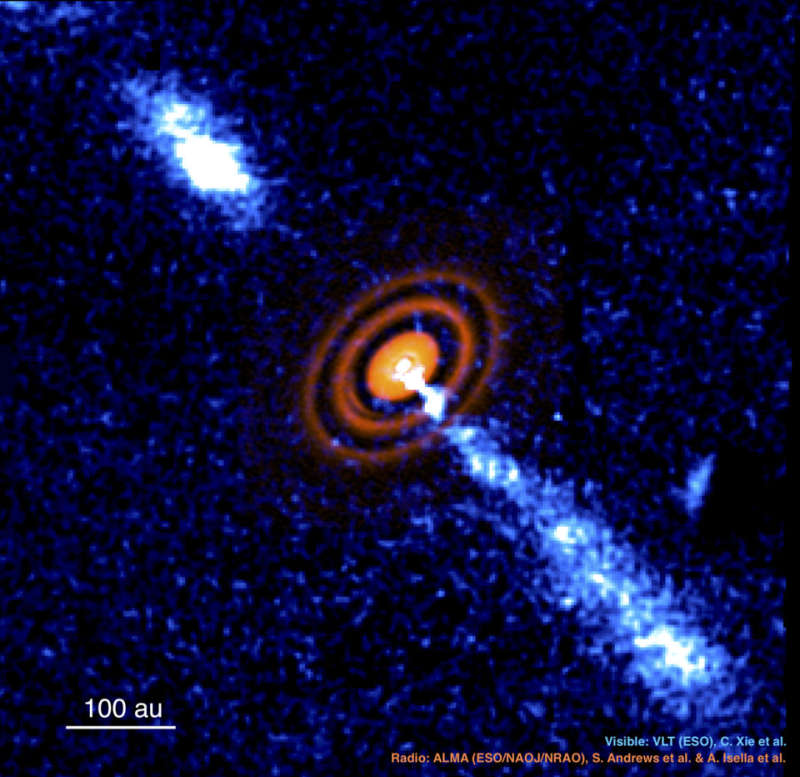
|
Explanation: How are jets created during star formation? No one is sure, although recent images of the young star system HD 163296 are quite illuminating. The central star in the featured image is still forming but seen already surrounded by a rotating disk and an outward moving jet. The disk is shown in radio waves taken by the Atacama Large Millimeter Array (ALMA) in Chile, and show gaps likely created by the gravity of very-young planets. The jet, shown in visible light taken by the Very Large Telescope (VLT, also in Chile), expels fast-moving gas -- mostly hydrogen -- from the disk center. The system spans hundreds of times the Earth-Sun distance (au). Details of these new observations are being interpreted to bolster conjectures that the jets are generated and shaped, at least in part, by magnetic fields in the rotating disk. Future observations of HD 163296 and other similar star-forming systems may help fill in details.
Astrophysicists:
Browse 2,500+ codes in the Astrophysics Source Code Library
|
January February March April May June July August September October November December |
| ||||||||||||||||||||||||||||||||||||||||||||||||
NASA Web Site Statements, Warnings, and Disclaimers
NASA Official: Jay Norris. Specific rights apply.
A service of: LHEA at NASA / GSFC
& Michigan Tech. U.
Based on Astronomy Picture
Of the Day
Publications with keywords: jet
Publications with words: jet
See also:
- APOD: 2025 September 3 Á Cir X1: Jets in the Africa Nebula
- APOD: 2025 May 9 Á IXPE Explores a Black Hole Jet
- APOD: 2025 April 9 Á HH 49: Interstellar Jet from Webb
- APOD: 2024 October 1 Á Porphyrion: The Longest Known Black Hole Jets
- The Galaxy, the Jet, and a Famous Black Hole
- APOD: 2024 May 7 Á Black Hole Accreting with Jet
- APOD: 2023 September 19 Á HH 211: Jets from a Forming Star
